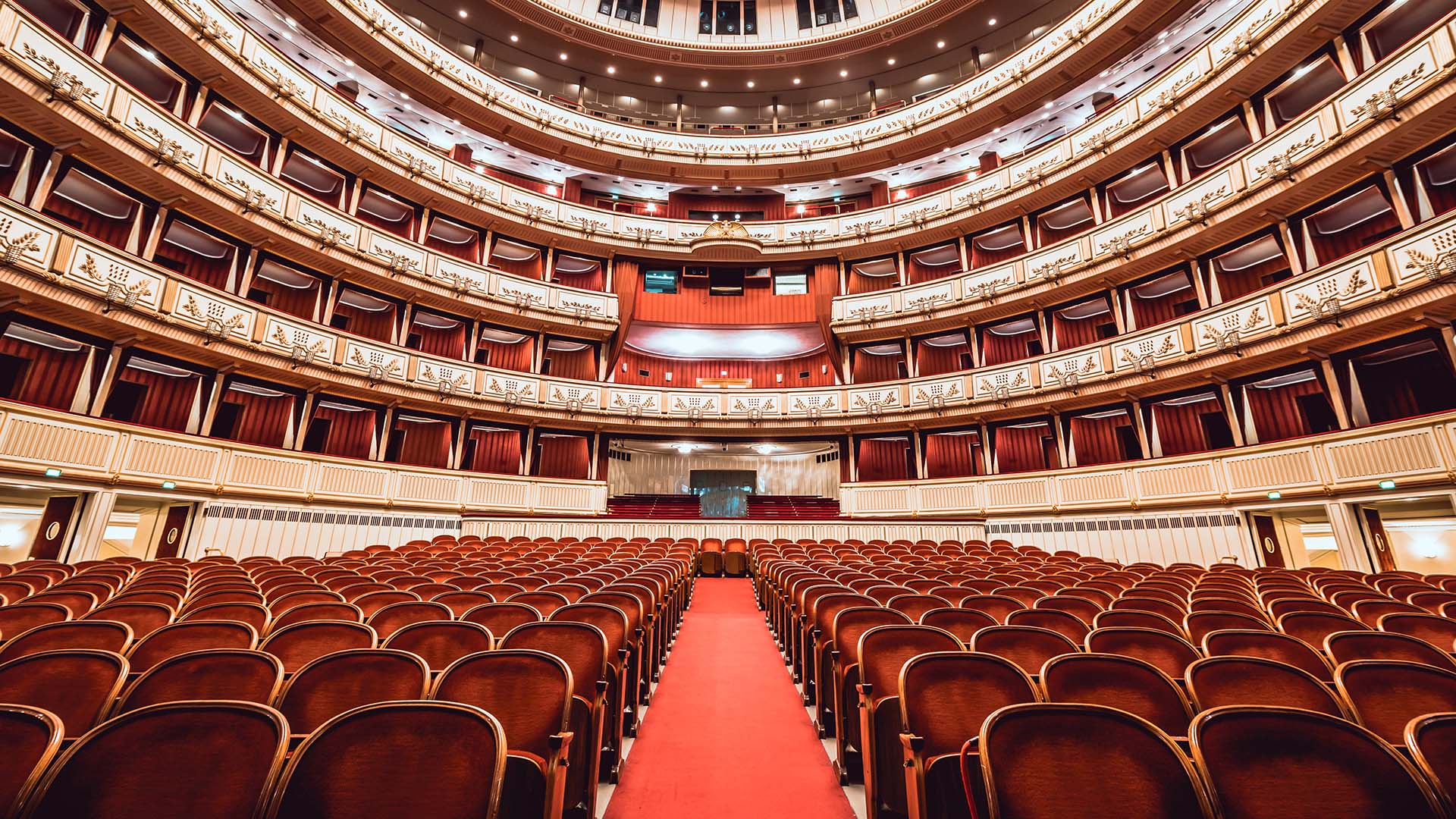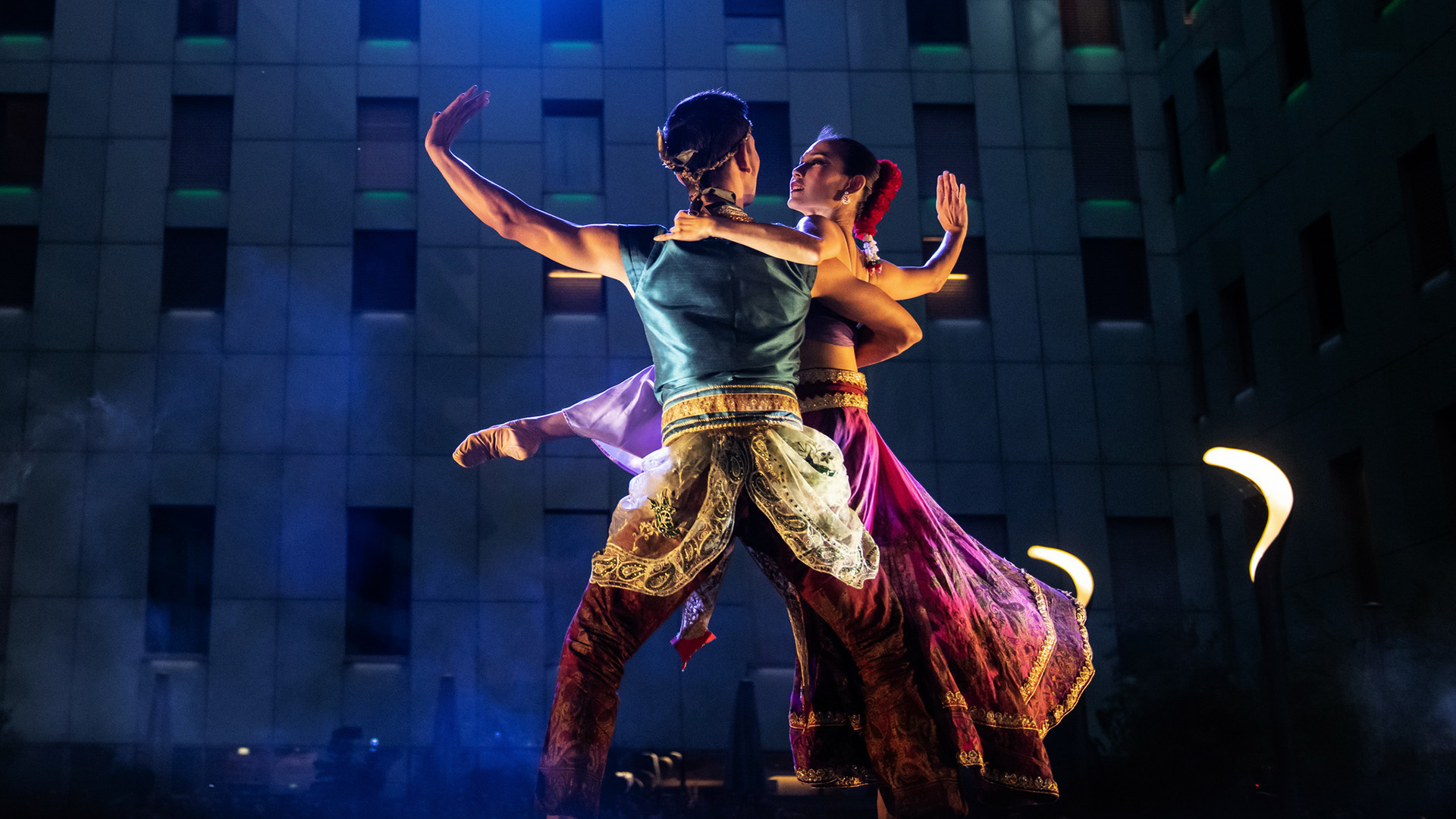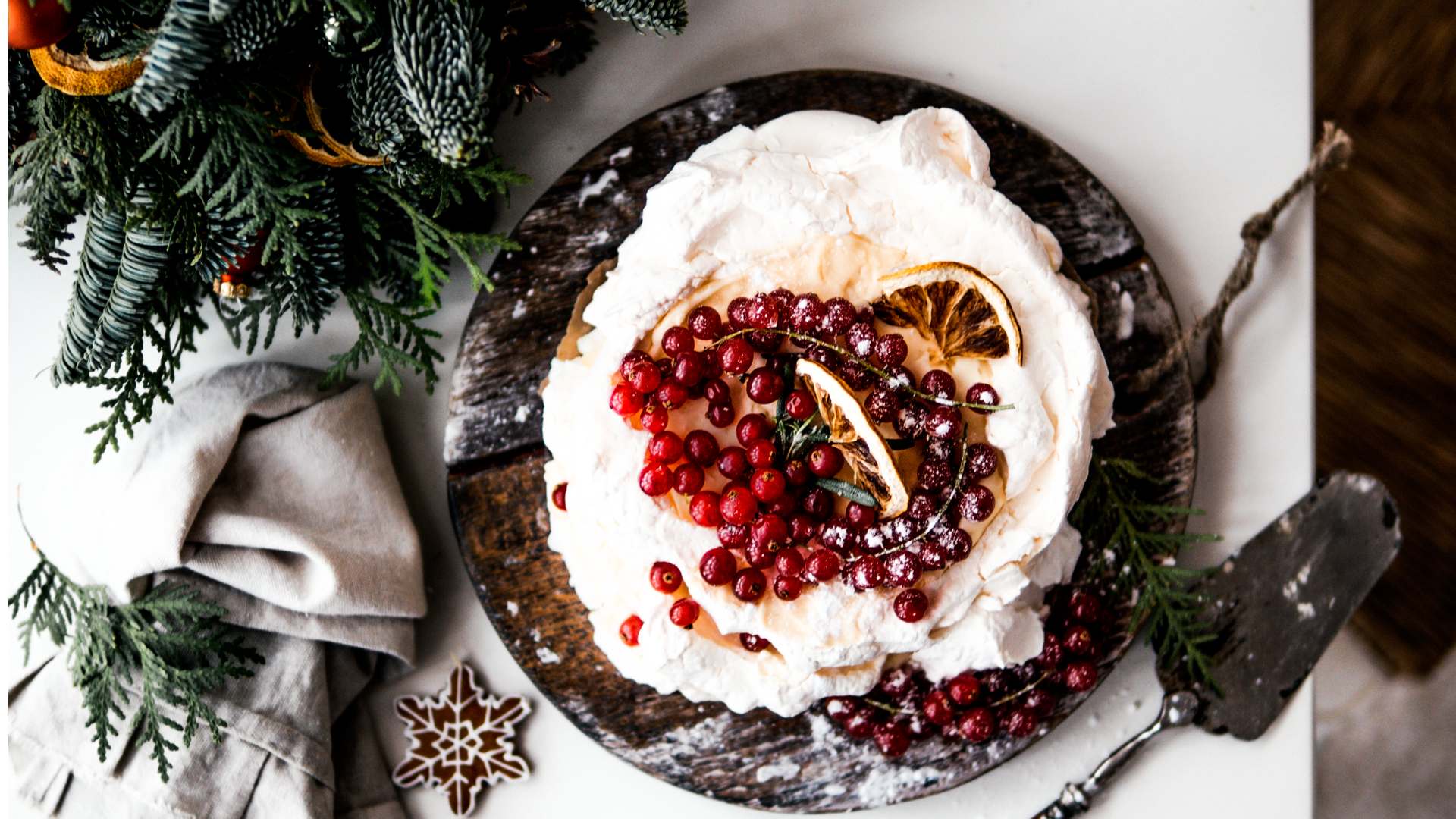
Tuck into a sweet pavlova at the holidays, taking a page from New Zealand. (Photo: Getty Images)
Culture + StyleHoliday Traditions from Around the World to Embrace Wherever You’re Celebrating
By Diana HubbellThe holiday season is a time for joy and laughter, no matter where in the world you find yourself celebrating. Though countries across the globe observe this special time of year, no two do so in exactly the same way. Even if you’ll be home for the holidays this year, consider incorporating some of these traditions into your own festivities.
Pavlova in New Zealand
Though the roasted lamb and Santa decorations would feel right at home in the United Kingdom, Kiwis have proudly integrated the culture of their islands into their Christmas traditions.
Locals often wish one another Meri Kirihimete, (“merry Christmas” in Maori), sing “Te Harinui,” and gather around a pōhutukawa, an indigenous tree with scarlet blossoms, instead of a fir tree.
While all manner of desserts make their way to tables here, a Pavlova is inevitably the star of the show. Both Australians and New Zealanders lay claim to the fluffy, fruit-topped meringue named for the ballerina Anna Pavlova. Luckily, you don’t have to live in either country to appreciate (and make) this cloudlike confection.
KFC and Beethoven in Japan
Despite the fact that Shinto and Buddhism are Japan’s dominant religions, Christmas has become a popular secular holiday here in recent decades. In lieu of roasted goose, 3.6 million Japanese families celebrate December 25 with a bucket of fried chicken from KFC.
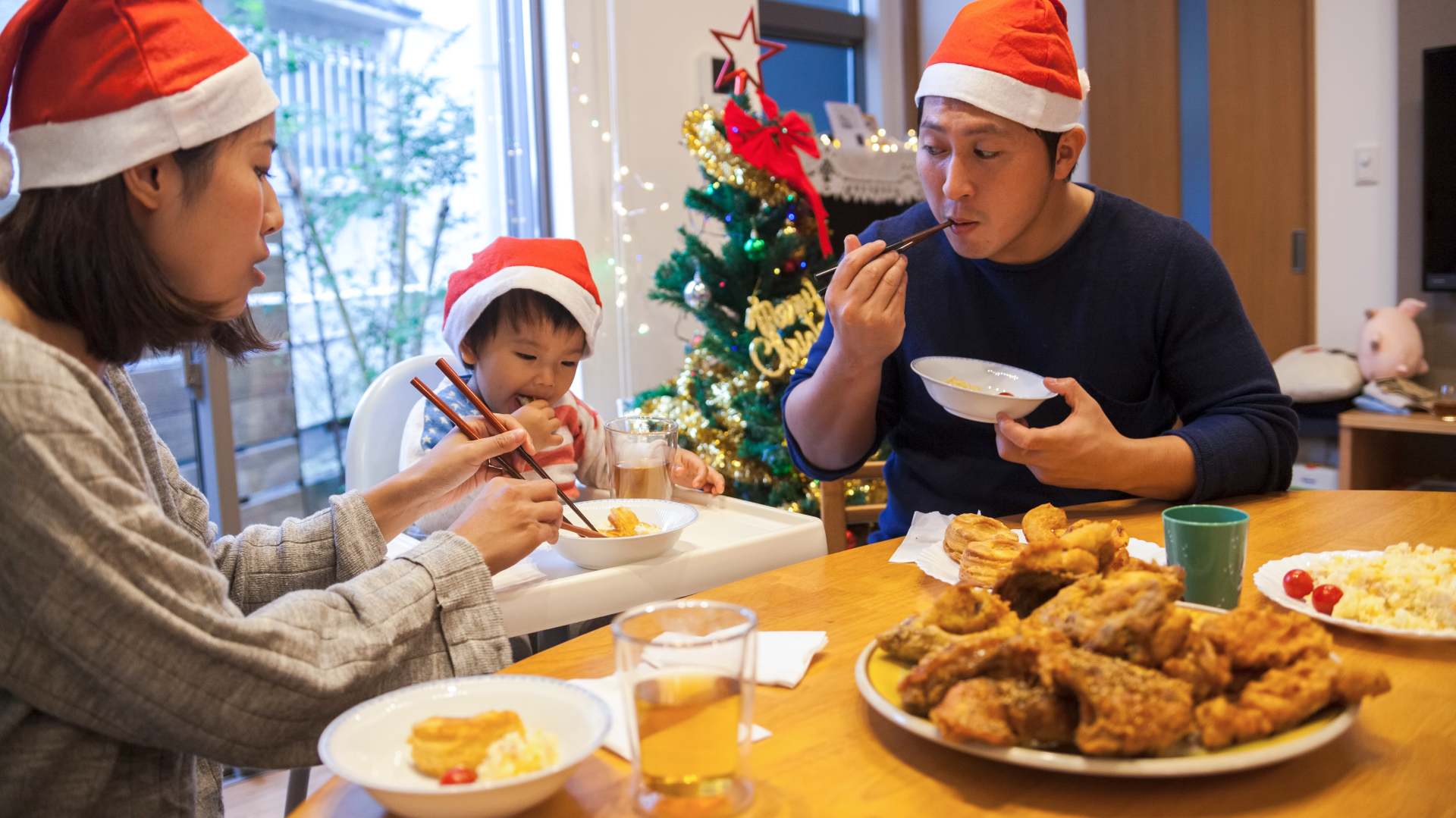
It all dates back to a 1974 marketing campaign with the slogan “Kurisumasu ni wa Kentakkii!,” or “Kentucky for Christmas!” Another unlikely Christmas tradition has its roots in World War I, when German prisoners of war sang “Ode to Joy” from Beethoven’s Ninth Symphony. Today, thousands of choir singers across Japan still belt out the lyrics in German.
To get into the spirit, order a round of fried chicken (karaage) — or fry up your own for an izakaya-style riff — then cue the Ninth, and crank up the volume.
Malva Pudding in South Africa
During the festive season in South Africa, locals might wish one another a merry Christmas in Xhosa, Zulu, Sesotho, English or Afrikaans. While some of the traditions surrounding the holiday come from English and Dutch colonists, South Africans have added their own distinctive elements over the years.
One especially beloved sweet is malva pudding, also known as lekker pudding. Though malva means “marshmallow” in Afrikaans, this sponge cake with apricot jam more closely resembles an English Christmas pudding. Served warm with créme anglaise or a tuft of whipped cream, it’s a snap to make and the perfect coda to an afternoon braai (barbecue).
Fortunetelling, Lucky Pigs and Slapstick in Germany
On New Year’s Eve in Germany, locals gather among friends and family for an evening of fun and games. Popular activities include Bleigießen, in which participants pour dollops of molten lead into water and try to divine their fortunes from the resulting shapes. You can substitute wax for lead, melting it over a candle.
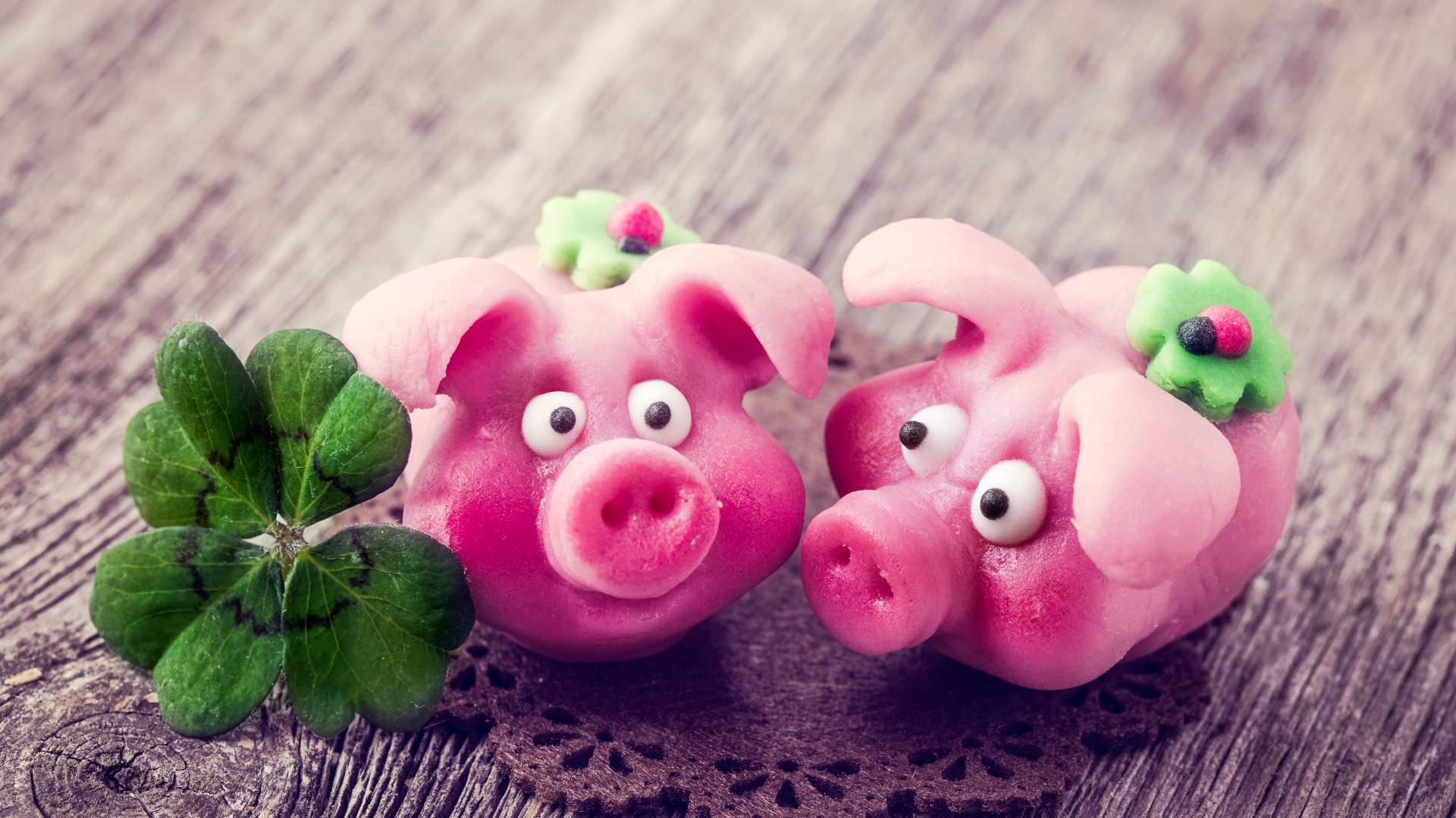
If you want to wish someone good luck, you could give them a Glücksschwein, or “lucky pig,” made out of marzipan. In German, the phrase Schwein haben, literally translated as “to have a pig,” means “to be lucky.”
Finally, no New Year’s bash in Germany would be complete without a screening of “Dinner for One,” a British slapstick short film from the 1960s. It’s not quite clear why this English-language comedy achieved cult status abroad, but at this point, it doesn’t really matter. The film is a delight, with humor that transcends language barriers.
Piñata Parties in Mexico
Christmastime in Mexico means a series of raucous parties, known as Las Posadas, with fireworks, decorations and lots of singing. For little ones, the highlight of the festivities is breaking the colorful piñatas fashioned out of paper-mache or clay and stuffed with candy.
Typically, the Christmas piñatas resemble seven-pointed stars in order to represent the seven deadly sins. Smashing them open portrays the triumph of good over evil. Creating your own piñatas requires little more than some modest arts-and-crafts skills and adds a whimsical element to any holiday gathering.
Feast of the Seven Fishes in Italy
In southern Italy, the customary gluttonous procession of Neptunian bounty on Christmas Eve is known simply as La Vigilia, (The Vigil) in honor of the wait for the arrival of baby Jesus.
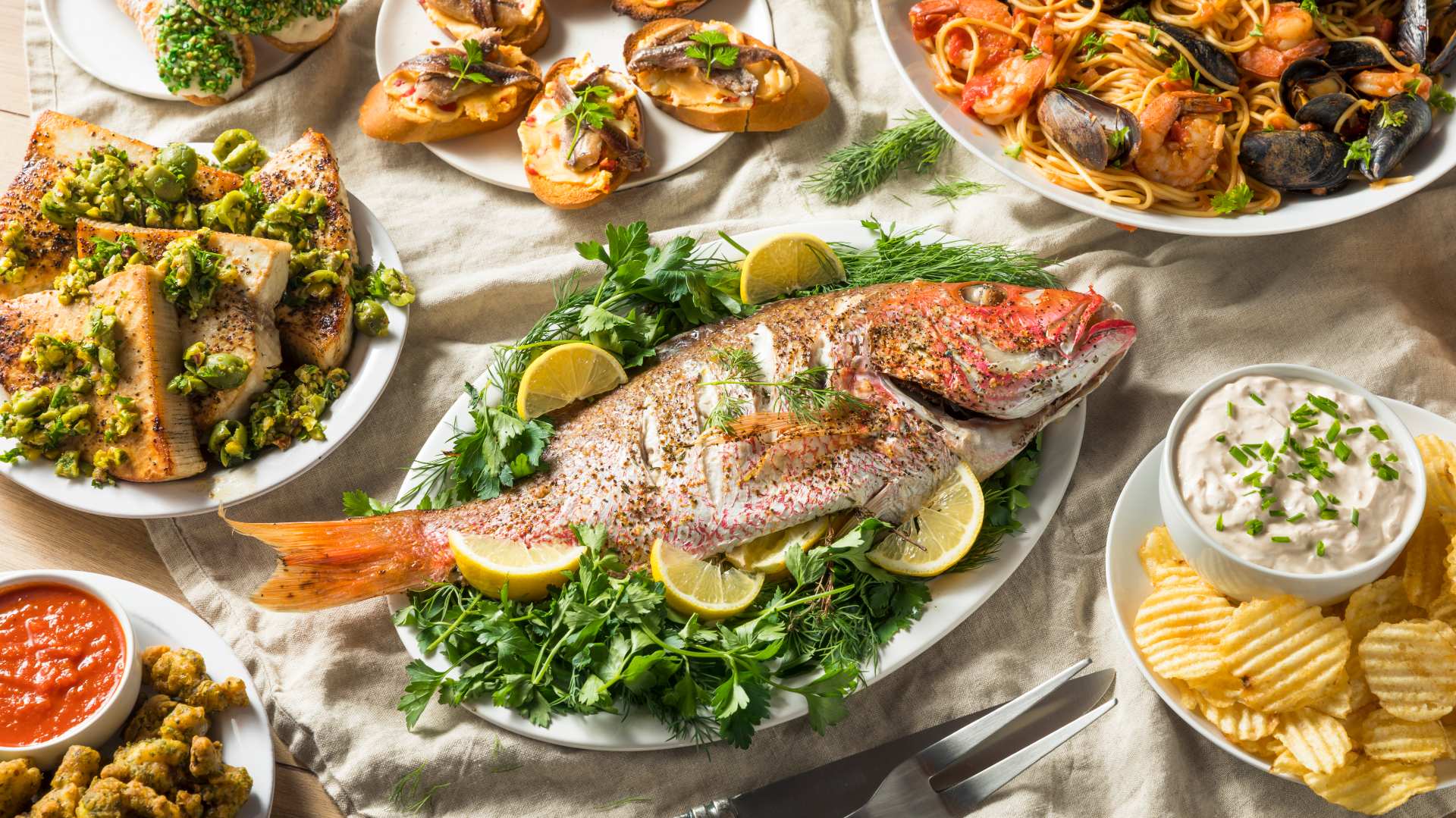
No one knows whether the number of courses in the Feast of the Seven Fishes represents the seven hills of Rome, the seven sacraments or the number of days in the biblical creation story. What we do know is that this is the perfect way to celebrate with family and loved ones, even if bella Italia is an ocean away.
There are no hard rules about what kinds of seafood to serve, but fried calamari, oysters, baccalà (salt cod) braised in tomato sauce, linguine with clams, and puttanesca with briny anchovies are all popular choices.
Wooden Shoes and Chocolate Letters in the Netherlands
Celebrations on December 25 in the Netherlands pale in comparison to Saint Nicholas Day on December 6, when Sinterklaas, a stately version of jolly Saint Nick with a bishop’s hat and golden crosier, passes through town.
Instead of stockings, Dutch children lay out traditional wooden shoes known as klompen by the fireplace on December 5. By the time the sun rises, the shoes are full to the brim with oranges, kruidnoten (tiny gingerbread-spiced cookies) and large chocolate letters representing the start of each child’s name. Even if a trip to Amsterdam isn’t in the cards, all of these specialty treats are available online.
“Monkey’s Tail” in Chile
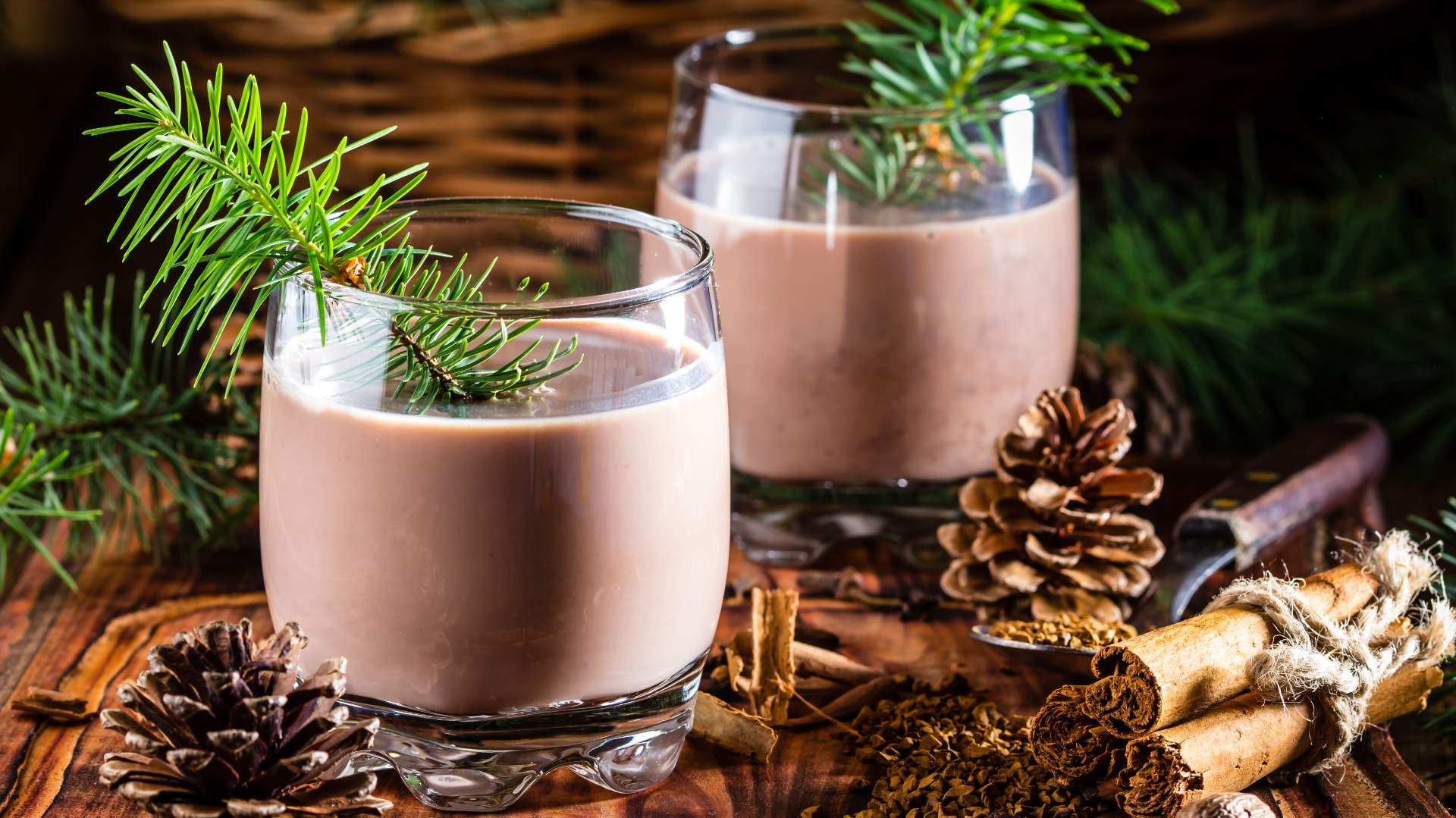
No Christmas Eve in Chile would be complete without a cup of cola de mono, or “monkey’s tail,” a cinnamon-scented, coffee-infused answer to eggnog. Since there are no raw eggs involved, this rich, boozy elixir is both delicious and much easier to make.
Recipes vary but usually involve stirring whole or evaporated milk in a saucepan with sugar, cinnamon sticks, whole cloves, nutmeg and vanilla until the mixture comes to a boil. Once the sugar dissolves, stir in instant coffee granules and remove from heat.
After everything has cooled down, spike to taste with brandy, Chilean aguardiente or a spirit of your choice. Chill for a few hours until you’re ready to serve.
Be careful though — the name comes from the idea that anyone who imbibes a few of these libations will find themselves swinging like a monkey.





